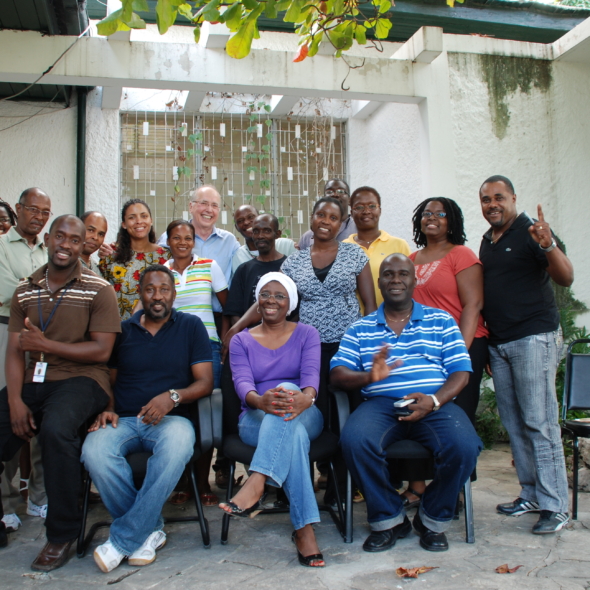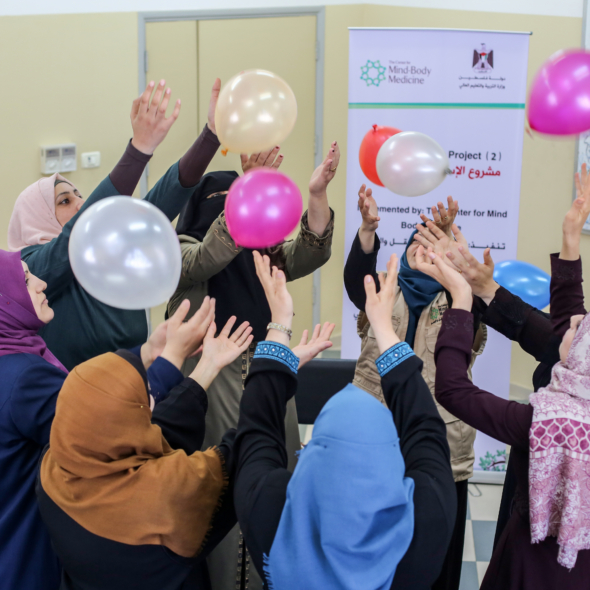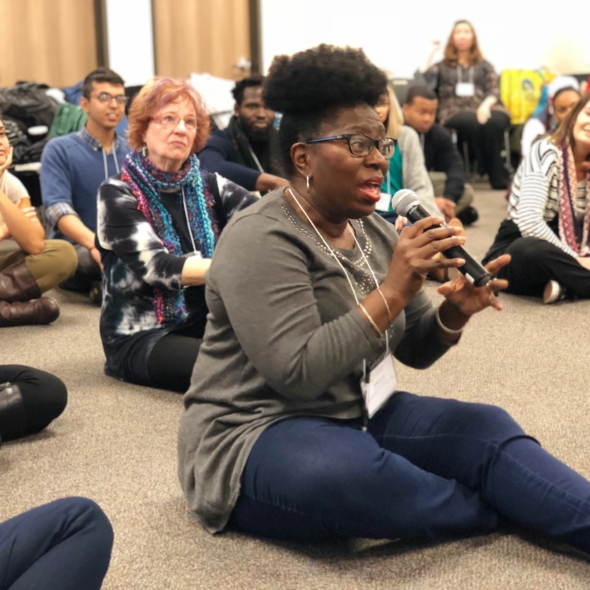There are six rows of cots, perhaps twenty cots in each. Children lie on them. White bandages capping the stumps left after amputations are visible. Some of the kids are asleep; others seem barely conscious. Women and mobile, healthy children crowd around many beds. A large somber man bends over a tiny baby whom he holds with one hand and delicately feeds with the other. Doctors, nurses, and volunteers in scrubs move from cot to cot. Doctors, nurses and other volunteers stop to high five small children who have been orphaned by the earthquake – wards of the ward it seems – hand them gum or candy, hoist them in the air, carry them for a while before setting them down. Periodically four men bearing patients on stretchers move quickly down the center aisle to or from the operating room or intensive care unit.
Stevenson lies quietly in one corner of the room. He is seventeen, tall and slim, with a sweet, thoughtful, handsome face. We talk about what happened to him. Stevenson’s mother Dieula (“God is there”) sits on a cot next to his, placid, nodding her head as her son speaks softly, adding details.
Stevenson had just arrived home from school on the afternoon of January 12. He had changed his clothes and was getting ready to do his home work – or perhaps watch a bit of TV first, he hadn’t decided. When the house began to shake and pieces of the roof to fall, Stevenson rushed outside. As he emerged a slab of concrete crushed his right arm. His mother who was outside cooking, rushed to him, held him up. For two days they walked and hitchhiked, Stevenson’s arm shredded, till they arrived at the then rudimentary Miami hospital tent.
The surgeon amputated Stevenson’s arm with a pocket knife, Lisa, a volunteer from New York tells me, crying with the memory. “There was only eight minutes of anesthesia,” she goes on, “and he just said ‘I am fine’.” Stevenson is still in bed a month later because the above elbow stump has been infected and reinfected. An IV with antibiotics flows into the back of his left hand. I teach him and his mother him some slow deep breathing to quiet the pain a bit, to help them sleep.
With Star interpreting from Creole Dieula and I talk some more. Only when I ask after the rest of her family does she tell me, turning aside for a moment first, that her daughter died in the ruins of their house, that in fact her entire extended family of aunts, uncles and cousins also perished. “There is no one,” she says with the tragic matter of factness, the enormous grief barely held behind a dam of determination, that seem to me emblems of this entire catastrophe, “except for my boy and myself. And after this hospital we have nowhere to go.”
I tell Dieula and Stevenson how much I appreciate them talking to us, how sorry I am for their terrible loss, how they have helped us to understand the pain and the plight and the strength too of the Haitian people. I explain that we are going to be visiting with other people in the hospital and that we hope to use what we have learned from them and others to help staff and patients here and elsewhere to deal a little better with their grief and all the uncertainties of the future. She says that is a very good thing and much needed.
I am not at all sure if we have been of any help at all. And yet when we greet Dieula a few hours later, as she sits on a bench, she favors us with a smile that brightens the overcast afternoon. “You have not forgotten,” she says.


